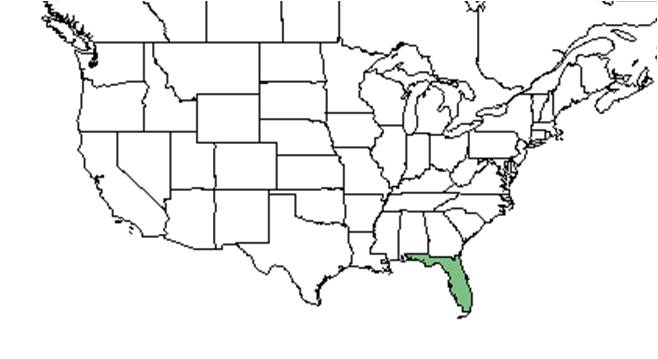Difference between revisions of "Chapmannia floridana"
KatieMccoy (talk | contribs) |
KatieMccoy (talk | contribs) (→Headline text) |
||
| Line 26: | Line 26: | ||
==Ecology== | ==Ecology== | ||
| − | + | ||
===Habitat=== <!--Natural communities, human disturbed habitats, topography, hydrology, soils, light, fire regime requirements for removal of competition, etc.--> | ===Habitat=== <!--Natural communities, human disturbed habitats, topography, hydrology, soils, light, fire regime requirements for removal of competition, etc.--> | ||
| Line 42: | Line 42: | ||
===Use by animals=== <!--Herbivory, granivory, insect hosting, etc.--> | ===Use by animals=== <!--Herbivory, granivory, insect hosting, etc.--> | ||
===Diseases and parasites=== | ===Diseases and parasites=== | ||
| + | |||
==Conservation and Management== | ==Conservation and Management== | ||
==Cultivation and restoration== | ==Cultivation and restoration== | ||
Revision as of 15:17, 2 November 2015
| Chapmannia floridana | |
|---|---|
Error creating thumbnail: Unable to save thumbnail to destination
| |
| Scientific classification | |
| Kingdom: | Plantae |
| Division: | Magnoliophyta - Flowering plants |
| Class: | Magnoliopsida - Dicotyledons |
| Order: | Fabales |
| Family: | Fabaceae ⁄ Leguminosae |
| Genus: | Chapmannia |
| Species: | C. floridana |
| Binomial name | |
| Chapmannia floridana Torr. & A. Gray | |

| |
| Natural range of Chapmannia floridana from USDA NRCS Plants Database. | |
Common name: Florida alicia
Contents
Taxonomic notes
Description
Distribution
Ecology
Habitat
Phenology
Seed dispersal
Seed bank and germination
Fire ecology
Pollination
The following Hymenoptera families and species were observed visiting flowers of Chapmannia floridana at Archbold Biological Station (Deyrup 2015):
Apidae: Bombus impatiens
Halictidae: Augochlorella aurata, Augochloropsis metallica, Lasioglossum nymphalis, L. placidensis
Use by animals
Diseases and parasites
Conservation and Management
Cultivation and restoration
Photo Gallery
References and notes
Deyrup, M.A. and N.D. 2015. Database of observations of Hymenoptera visitations to flowers of plants on Archbold Biological Station, Florida, USA.